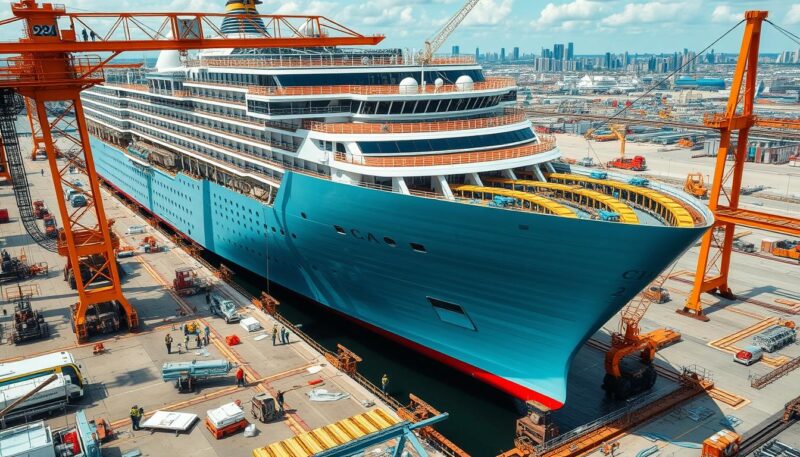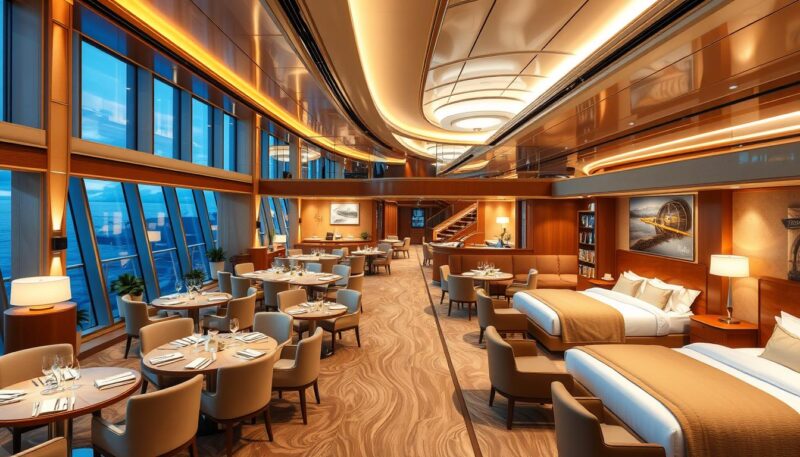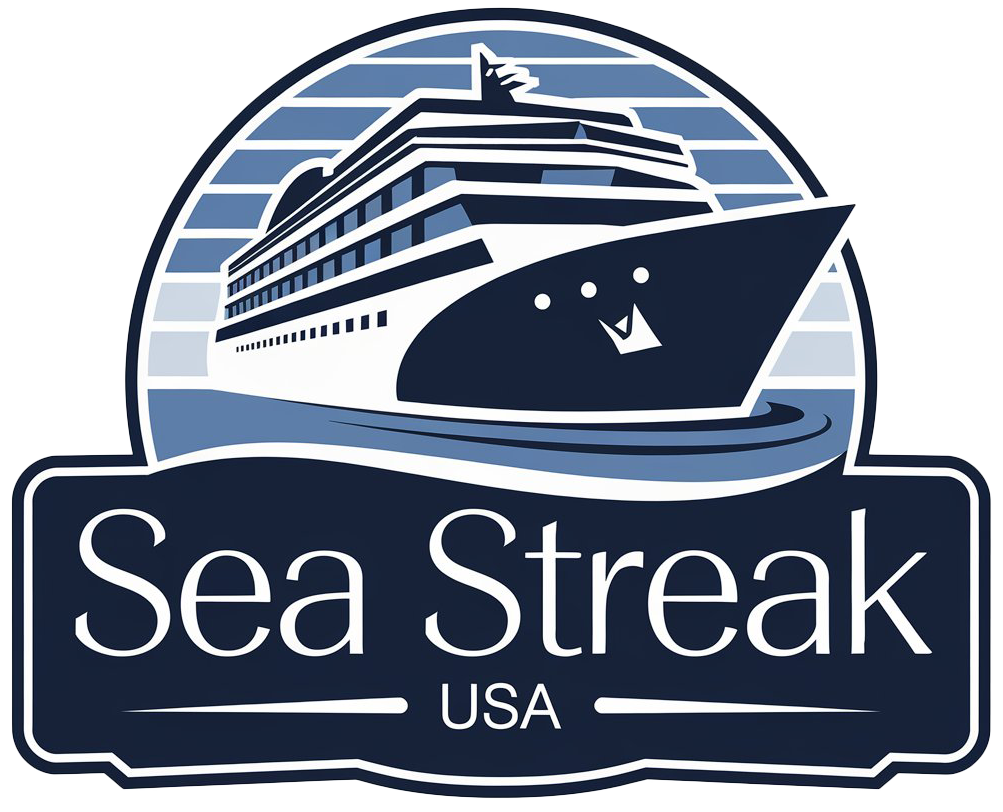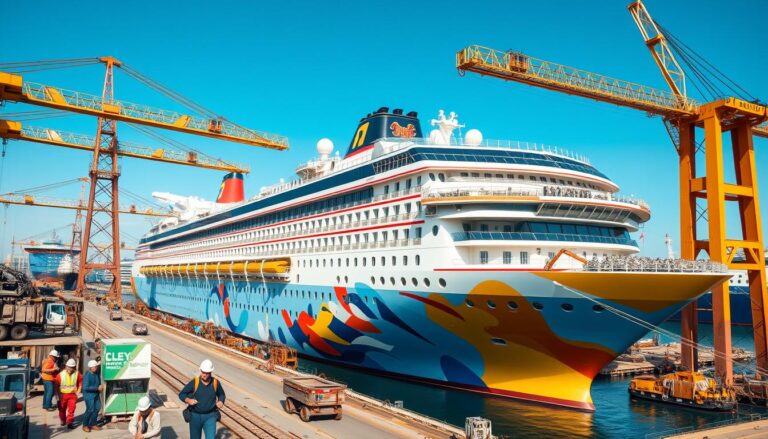Building a cruise ship is an awe-inspiring journey that marries advanced technology with traditional craftsmanship. Picture a floating city, poised to sail across the open waters, designed to provide a myriad of experiences for passengers. Each vessel is the result of meticulous planning and engineering, transforming concepts into reality. As you delve into the cruise ship construction process, you will uncover just how intricate and challenging this endeavor is. From initial designs created using advanced 3D modeling software to the sturdy hull sections that endure the ocean’s relentless waves, every detail matters in the quest for perfection.
The construction of a cruise ship typically spans several months to years, demanding collaboration among skilled electricians, plumbers, and interior designers. These professionals work tirelessly to ensure that every amenity, from fine dining options to state-of-the-art entertainment venues, is seamlessly integrated into the ship’s design. With cruise ships reaching impressive speeds of over 20 knots, propelled by massive diesel engines—or even more sustainable LNG-powered engines—these floating marvels showcase human ingenuity and innovation. Join us as we explore the intricate process of how cruise ships are built, revealing the secrets behind these luxurious vessels that whisk travelers away to new adventures.
The Journey Begins: Designing and Planning the Cruise Ship
The creation of a cruise ship is a multi-faceted undertaking that starts long before steel meets water. The pursuit of excellence in cruise ship design and engineering necessitates comprehensive planning. Naval architects engage in extensive market research to comprehend passenger preferences, industry trends, and competitive dynamics, laying the groundwork for innovative designs.
Utilizing Advanced 3D Modeling Software
One of the cornerstones of contemporary cruise ship design is utilizing advanced 3D modeling. This technology allows teams to create intricate digital blueprints that not only visualize the ship’s structure but also help identify potential issues early in the process. Every element, from the hull’s curvature to interior layouts, is meticulously mapped out to optimize space and functionality. The use of 3D modeling enhances collaboration among engineers, designers, and stakeholders, driving efficiencies in the early stages.
Testing Stability and Structural Integrity
Following the design phase, structural integrity testing becomes crucial. Classification societies, such as Lloyd’s Register and DNV GL, play a vital role in reviewing and certifying the ship’s design for safety, ensuring that it can withstand the rigors of ocean travel. Engineers conduct stability assessments, hydrodynamic simulations, and other vital evaluations to confirm weight distribution is balanced and design flaws are mitigated before transitioning to the construction phase.
Initial Steps in Cruise Ship Design and Engineering
As the initial steps in cruise ship design and engineering unfold, multiple considerations guide the process. This includes decisions regarding sustainable travel solutions, such as smart sensors for engine performance and dedicated waste management areas, reflecting the industry’s commitment to eco-friendly practices. The collaboration of diverse experts further ensures that the ship’s design aligns with the latest safety and performance standards.
| Design Phase | Activities | Impact |
|---|---|---|
| Market Research | Understanding passenger preferences and trends | Informs design choices for better guest experience |
| 3D Modeling | Creating digital designs and simulations | Prevents costly errors and optimizes design |
| Stability Testing | Conducting structural evaluations | Ensures safety and seaworthiness |
| Sustainable Solutions | Incorporating eco-friendly systems | Enhances environmental responsibility |
How Cruise Ships Are Built? The Construction Process
Embarking on the cruise ship construction process transforms visionary designs into magnificent floating cities. This intricate journey begins with the crucial steel-cutting and keel-laying ceremonies, showcasing the marriage of tradition and modern technology. Below are the key elements that define this exciting phase of shipbuilding.
From Steel-Cutting to Keel-Laying Ceremony
The construction process kicks off with the steel-cutting ceremony, where thousands of steel pieces are intricately cut for the hull, bulkheads, and decks. Precision in this stage is paramount as each piece plays a pivotal role in the integrity of the ship. Following the steel-cutting, the keel-laying ceremony marks a significant milestone. During this event, the first block is lowered into the dry dock using advanced GPS coordinates and laser technology, ensuring accuracy.
Building the Hull: A Symphony of Steel
Building the hull is akin to creating a grand orchestra where each segment harmonizes to form a robust structure. Steel sections, weighing up to 180 tonnes, are meticulously welded together. The hull steel sections, with a thickness of 30mm, are crafted with precision to maintain the vessel’s durability against the harshest marine conditions. Shipyards in Europe retain an advantage in shipbuilding, while competition from Asia, particularly China and Korea, brings formidable innovation and efficiency into the mix.

Transforming Sections into a Complete Ship
The culmination of the cruise ship construction process involves assembling the hull’s segments into a cohesive structure within the dry dock. This stage is vital for establishing the framework that will support the entire ship. Crafting a cruise ship typically takes 2 to 3 years, with over 20 new mega-ships launching annually. Notable advancements, such as the use of robotic laser cutters, facilitate the swift completion of sections, sometimes within mere hours. The integration of the superstructure, which can reach weights of up to 800 tonnes, signifies substantial progress toward a fully functional vessel.
| Key Statistics | Details |
|---|---|
| Percentage of new mega-ships debuting each year | More than 20 cruise ships |
| Steel thickness of hull sections | 30mm |
| Weight of hull steel sections | Up to 180 tonnes |
| Weight of superstructure sections | Up to 800 tonnes each |
| Years of operation for Meyer Werft | Generations of craftsmanship |
| Shipyards in Asia | Numerous competitive facilities |
| Shipyards in Europe | Retaining advantages in shipbuilding |
Outfitting the Floating City: Interior Development and Innovations
Once the hull of the cruise ship is complete, the process of interior development begins, transforming the vessel into a vibrant floating city. This stage involves a dedicated team of electricians, plumbers, and designers who work synergistically to install vital systems. Each professional brings specialized skills that contribute to a seamless operational environment.
The Role of Electricians, Plumbers, and Designers
Skilled electricians focus on complex electrical installations, ensuring that each area of the ship has adequate power supply. Plumbers install intricate plumbing systems that provide water and sewage management. Designers curate spaces that enhance the passenger experience, from public areas to private cabins, ensuring that aesthetics and functionality coexist in harmony. This collaborative effort results in an inviting atmosphere onboard.
Installing Amenities: A City at Sea
The amenities installation phase incorporates features that elevate leisure and comfort. With 2,144 passenger rooms in the latest vessels, this substantial capacity facilitates various activities. Dining areas featuring diverse cuisines, theaters showcasing entertainment, and recreational spaces designed for relaxation provide an all-encompassing vacation experience. The sheer variety of offerings onboard emphasizes the commitment to enhancing guest satisfaction during their journey at sea.
Powering the Ship: Diesel Engines and Sustainable Solutions
Integral to the cruise ship’s functionality is the installation of powerful diesel engines paired with sustainable solutions. Transitioning towards greener energy sources has become a priority in recent years. Many modern cruise ships are exploring options such as liquefied natural gas (LNG) to minimize their environmental footprint. This approach exemplifies the industry’s dedication to responsibility while ensuring the efficient operation necessary for expansive voyages.

Conclusion
The importance of cruise ship construction can hardly be overstated, as each vessel represents a monumental achievement in human ingenuity and engineering marvels. Built in some of the world’s leading shipyards, predominantly in Europe, cruise ships like those from Fincantieri in Italy and Meyer Werft in Germany take years of meticulous planning and craftsmanship to realize. From the initial design stage to the final delivery—a process that usually spans two to three years—these “floating cities” come to life with luxury amenities and innovative technologies designed to elevate passenger experiences at sea.
As you consider the future of cruise ships, it’s fascinating to note how the industry is adapting to evolving traveler expectations and sustainable practices. The shift toward prefabrication and modern construction techniques allows shipbuilders to enhance efficiency while ensuring high standards of quality and safety. Each vacation experience begins with extensive sea trials to guarantee smooth operations, a testament to the engineering brilliance embedded into each ship. The growth in passenger capacity and onboard features highlights the commitment to not only providing luxury but also embracing the future of maritime travel.
As cruise ship construction continues to evolve, it will play a crucial role in how we envision leisure travel on water. With an increasing focus on sustainability and operational efficiency, you can expect larger, even more innovative vessels to grace the oceans, transforming the way you explore the world. The engineering marvels born from these shipyards promise an exciting future, one where the integration of advanced technology and passenger comfort reaches new heights, ensuring the cruise experience remains a pinnacle of oceanic adventure.

